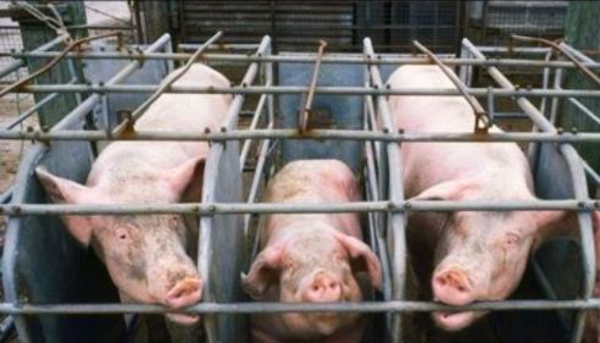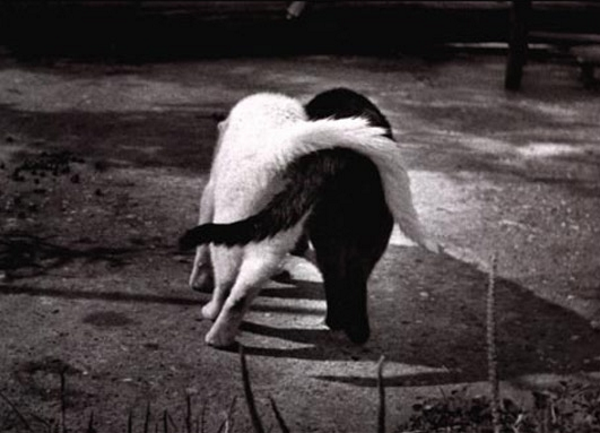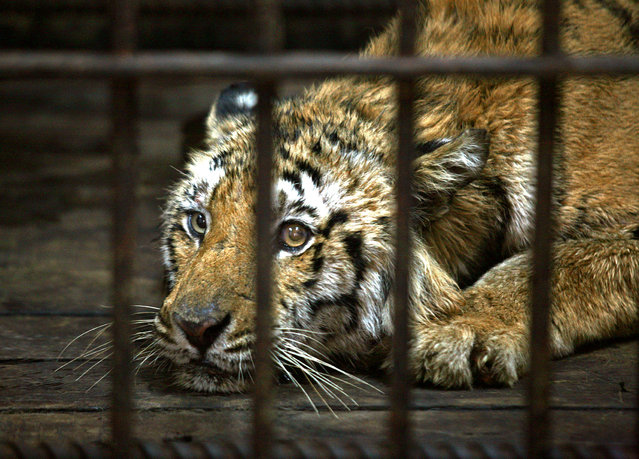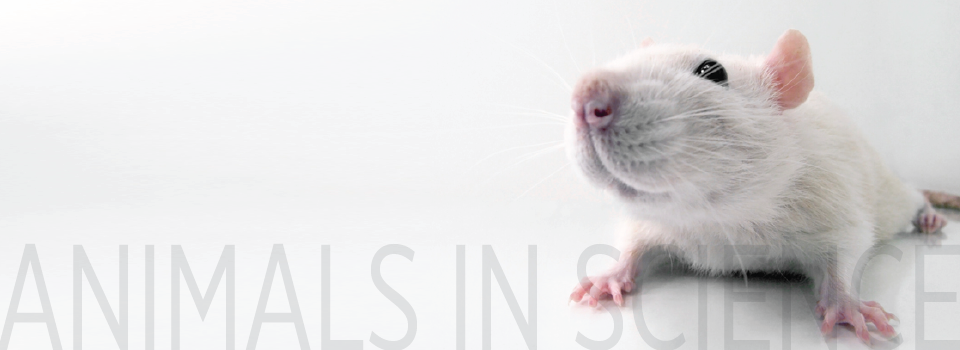Animal Rights
If you view nothing else on this page please at least scroll down to view the video ‘Earthlings’ at the end of this article.
If you view nothing else on this page please at least scroll down to view the video ‘Earthlings’ at the end of this article.
Animals are in many important ways like humans. They are sentient creatures that feel pleasure and pain, experience emotions, remember, anticipate, and learn. What happens to them is important for them, unlike what happens to a rock or a stone. If humans deserve rights, then so do animals.
Animal interests, however, are not the same as human interests. Animals do not need equality before the law, freedom of speech, freedom of religion, or fair taxation. They are not interested in voting or getting a high school education. It would be silly to give animals these rights, but it should not prevent us from bestowing relevant or appropriate rights on animals.
Animal rights supporters believe that animals are not ours to use as we wish for whatever purpose, be it for food, clothing, experimentation, or entertainment. They believe that we should consider the best interests of animals regardless of the usage value they may have for us.
They have the right to live free in the natural state of their choosing, the right to express normal behavior (e.g. food searching, grooming, nest building), and the right to life. The right to reproduce, the right to chose their own lifestyle (e.g. not be coerced into experiments or used as entertainment) and the right to live free from human-induced harm (e.g. hunger, thirst, molestation, fear, distress, pain, injury or disease).
The Declaration of Animal Rights was drafted in May 2011 by international animal rights and planet conservation groups. It was copied onto a large scroll of paper, which since then has been traveling the world and collecting signatures.
The scroll is now 100 meters long, with almost 15,000 signatures. Once it reaches 50,000 signatures, it will be sent to the White House, the UN, the EU Parliament, and other world leaders. You can read and sign The Declaration of Animal Rights here.
Animal welfare focuses on the “well being” of animals rather than the total abolition of their exploitation. Animal rights advocates are campaigning for no cages, while animal welfare supporters are campaigning for bigger cages. Being kind to animals is not enough. Avoiding cruelty is not enough. Whether we exploit animals to eat, to wear, to entertain us, or to learn, the truth of animal rights requires empty cages, not larger cages.

Each year in the U.S., 10 billion farm animals are killed for food. Over 90% of them live in horrible factory farms, where they are overcrowded, neglected, and never go outdoors. Worldwide, 51 billion animals are killed each year. The suffering this represents is staggering. Female pigs kept in farrowing crates, egg-laying hens and veal calves kept in cages and crates so small that they cannot turn around, practices, beak cutting, castration, branding, and forced impregnation are all common practice. Starvation for 7-14 days (forced molting) is routinely practiced on laying hens and its effects on these poor animals can be seen pictured below.


Yearly, 15 million healthy dogs and cats are killed in overcrowded shelters in the U.S., and millions more are abandoned. Buying animals from pet shops causes more animals in shelters to continue to live lonely lives and be euthanized instead of adopted.
Spaying and neutering should be mandatory. We recommend that anyone considering adding an animal to their family do so by visiting a shelter to adopt an animal rather than buying one, even from a supposedly reputable breeder.
The list of services rendered by animals (without their consent) to humans has no end.
Animals are used for

For many of those activities animals endure cruel training methods like beating, electric shock, whips, chemical burning agents, and bullhooks which are standard procedures during training.
Civil rights activist Dick Gregory has called the treatment of circus animals “slavery”.

The Animal Welfare Act and the PHS Policy on Humane Care and Use of Laboratory Animals are the two main regulations governing the use of animals in U.S. labs. However, millions of animals suffer and die in unnecessary, inadequately monitored, and counterproductive research. In the end, the minimal protections offered by the AWA and PHS Policy provide no real safety or relief to the millions of animals in labs and offer only a false sense of security to the caring public. Rather, so-called “scientific necessity” remains in place for the continued unbridled use of animals in unimaginable manners in research and testing.
Many scientists believe that in vitro testing is scientifically superior to the savage testing on animals. The same is true for radiation exposure tests and cosmetic testing. Technology such as MRI, EEG, PET, and CT scans provide alternatives to cutting into the brains of cats and monkeys.
Cancer antibody testing is better conducted with human cells than by injecting mice with cancer. Many medical schools are eliminating animal testing because of its unreliability. Other alternatives are Computer modeling and Human Patient Simulation.

Hunting
The Animal Welfare Act and the PHS Policy on Humane Care and Use of Laboratory Animals are the two main regulations governing the use of animals in U.S. labs. However, millions of animals suffer and die in unnecessary, inadequately monitored, and counterproductive research. In the end, the minimal protections offered by the AWA and PHS Policy provide no real safety or relief to the millions of animals in labs and offer only a false sense of security to the caring public. Rather, so-called “scientific necessity” remains in place for the continued unbridled use of animals in unimaginable manners in research and testing.
Fishing
Fish feel pain too. Fish and other sea animals die painfully of suffocation or, in catch and release fishing, of infection. Uncounted billions of these animals are killed each year in the US. For shrimp fishing alone, for every shrimp caught by US boats in the Gulf of Mexico at least four non-target fish are discarded. That’s over 3 billion fish needlessly killed annually!
There are no protections for fish and sea animals. There are no guidelines or government regulations with respect to the catching and killing of fish.
Fortunately some advances have been made, both on a policy level and by creating public awareness. Animal Rights Groups that work on legislation such as ISAR and The Humane Society Legislative Fund work effortlessly to bring us closer to a society in which humans will no longer have to be ashamed of how they treat animals.
Animal cruelty is worldwide, but some countries are way ahead of the pack when it comes to protecting their fellow ‘earthlings’. Not only does Holland have an Animal Political Party but their use of non-human primates in experiments decreased by a massive 49 percent between 2015 and 2016.
Over the past 20 years, the United States has passed over a thousand bills to protect Animals and for the first time, New York’s Court of Appeals admits there is no legal basis for denying personhood rights to chimpanzees.
EARTHLINGS is an award-winning documentary film about the suffering of animals for food, fashion, pets, entertainment, and medical research. The film is narrated by Academy Award nominee Joaquin Phoenix and features music recording artist Moby. Initially ignored by distributors, today EARTHLINGS is considered the definitive animal rights film by organizations around the world. Watch Earthlings Now!
Local: Massachusetts Animal Rights Coalition
National: The Physicians Committee
American Anti-Vivisection Society
International:
animal rights organisations
Animal Welfare Education